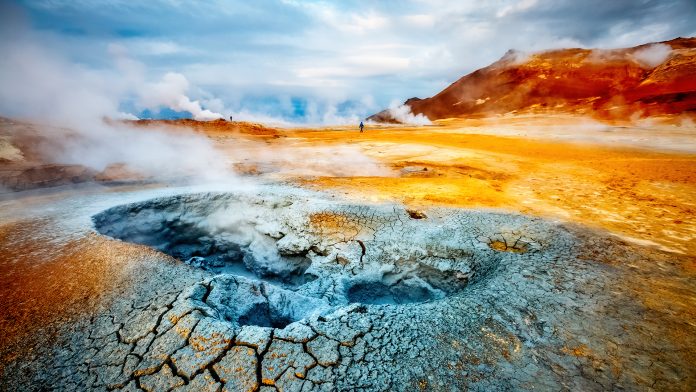In a paper presented last month at Stanford University, a geothermal scientist detailed the gaps in research and development that must be tackled before clean geothermal energy can potentially power the planet.
Tapping into the clean geothermal energy below our feet as a form of renewable energy has been attracting greater attention as the world moves toward alternatives to fossil fuels in the battle against climate change.
A 58-page report released on 18 March by the U.S. Department of Energy focuses on the potential of next-generation geothermal power to transform the US energy landscape.
But there is still work to be done.
The new paper highlights the challenges facing geothermal energy and what we must do to ensure it can be used.
Trenton T Cladouhos, the paper’s author, said: “The tools to solve the scientific and engineering challenges are available. It’s a matter of international and multidisciplinary collaboration, system integration, and demonstration projects.”
He added: “The industry is busy unlocking geothermal’s potential at all temperatures and places. It’s never been a better time to be in the geothermal industry.”
Extracting superhot rocks
Cladouhos’ remarks focused on the challenges associated with extracting clean geothermal energy from deep underground, where superhot rocks sit at temperatures of more than 375°C.
Water piped through those areas would become supercritical. This steam-like phase can carry some five to ten times more energy than regular hot water, making it an extremely efficient energy source if it could be piped to turbines that convert it into electricity.
The paper states: “Recovery of just 2% of the thermal energy stored in hot rock 3-10km below the continental US is equivalent to 2,000 times the primary US energy consumption.”
One key problem to that end is simply getting there. The drills used by the oil and gas industries aren’t designed to withstand the extreme temperatures and pressures miles below, where the majority of clean geothermal energy is found.
Researchers around the world are working on engineered geothermal systems (EGS), essentially underground radiators or heat exchangers, that aim to do just that. Companies such as Eavor and Fervo Energy are developing and using various approaches in the field, but none have been demonstrated at temperatures over about 200°C.
“If we really want geothermal to be a game changer, we have to operate at superhot temperatures, or over 375°C,” Cladouhos said.
Bridging R&D gaps to unlock clean geothermal energy
Cladouhos’ talk addressed 14 gaps in research and development that must be bridged to unlock clean geothermal energy. These are organised into three categories: basic science, tools & infrastructure, and stimulation & reservoir technology.
One key gap is the need for more data about rock mechanics at extreme depths and pressures. That data, in turn, will allow geothermal scientists to better model these systems.
Another example involves stimulation design, or how to create the most economical system for moving water through superhot rocks to capture their energy. Some of the shallow geothermal systems in operation today involve creating fractures in the rock, which increases the surface area for heat transfer.
According to Cladouhos, fracturing the rock at superhot depths and temperatures “is another unknown.”
A third gap involves well completions, or how to stabilise wells exposed to the ultra-harsh conditions associated with the resource. Wells drilled to superhot temperatures in countries including Iceland, Japan, the United States, and Italy have all eventually failed.
Revealing new knowledge
Cladouhos emphasised that investors must understand that the path to accessing superhot rock will be iterative.
“The first-of-a-kind superhot rock EGS project will fill many of the knowledge gaps and likely reveal some new gaps,” he said.
“Reaching our commercial goals will require an iterative process of technology development and field tests.”
Nevertheless, he and Callahan are optimistic about success: “Although superhot rock geothermal will push the limits of many subsurface tools and is beyond the bounds of current hydrothermal and EGS projects, it should be noted that humans safely and routinely operate equipment that contains materials above 375°C.”









